
Geology and History
Mount Rainier at 14,410′, is an active volcano that formed around half a million years ago. It’s part of the Pacific Ring of Fire, a region known for its high volcanic activity. Rainier is a stratovolcano, indicating its explosive potential. While Mount Rainier is considered dormant, it’s still an active volcano. The last significant eruption occurred over a thousand years ago, but scientists closely monitor the mountain for any signs of renewed activity.
The indigenous peoples of the region, including the Puyallup, Yakama, and Nisqually tribes, have inhabited the area around Mount Rainier for thousands of years. They consider the mountain to be sacred and have various legends and stories associated with it.
Buy Rainier prints and other products
The first recorded European sighting of Mount Rainier was by George Vancouver, a British explorer, in 1792. However, it wasn’t until 1833 that it was named “Mount Rainier” in honor of Admiral Peter Rainier by George Gibbs, a botanist on an American expedition. Rainier,mwhile man apt adjective, is one of the Cascades volcanoes named from sailing ships to honor British admirals (Hood, St. Helens, Baker but not 3 Fingered Jack)

In 1899, Mount Rainier was designated as the nation’s fifth national park, primarily due to the efforts of naturalist John Muir. It was the first national park created in the Pacific Northwest.

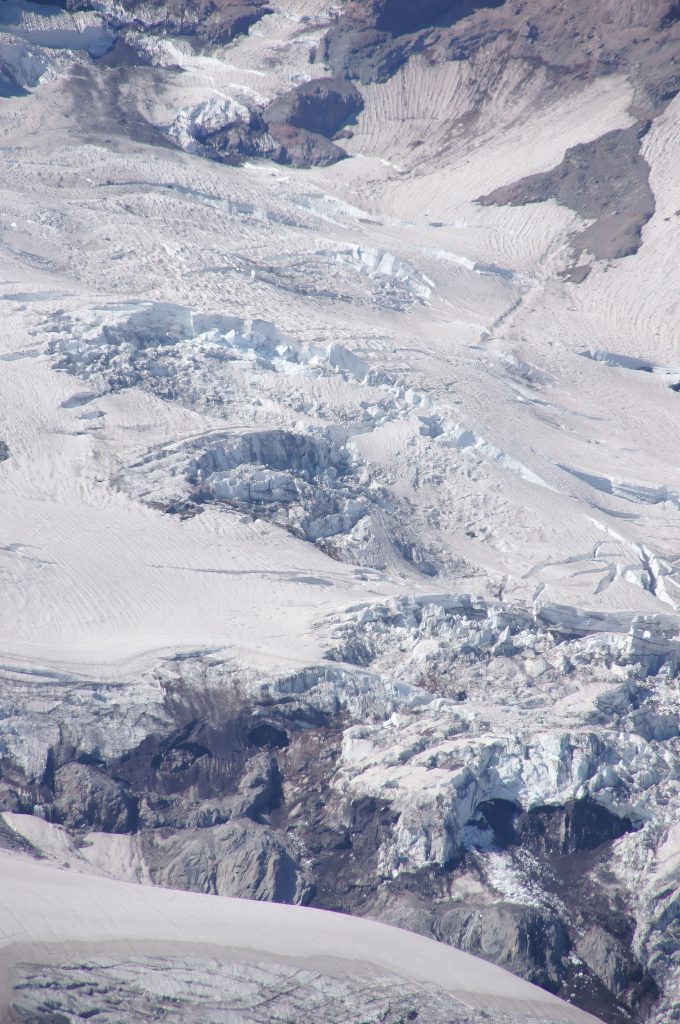
Mount Rainier is known for its extensive glaciers. During the last Ice Age, these glaciers covered a much larger portion of the mountain and have significantly shaped the landscape.
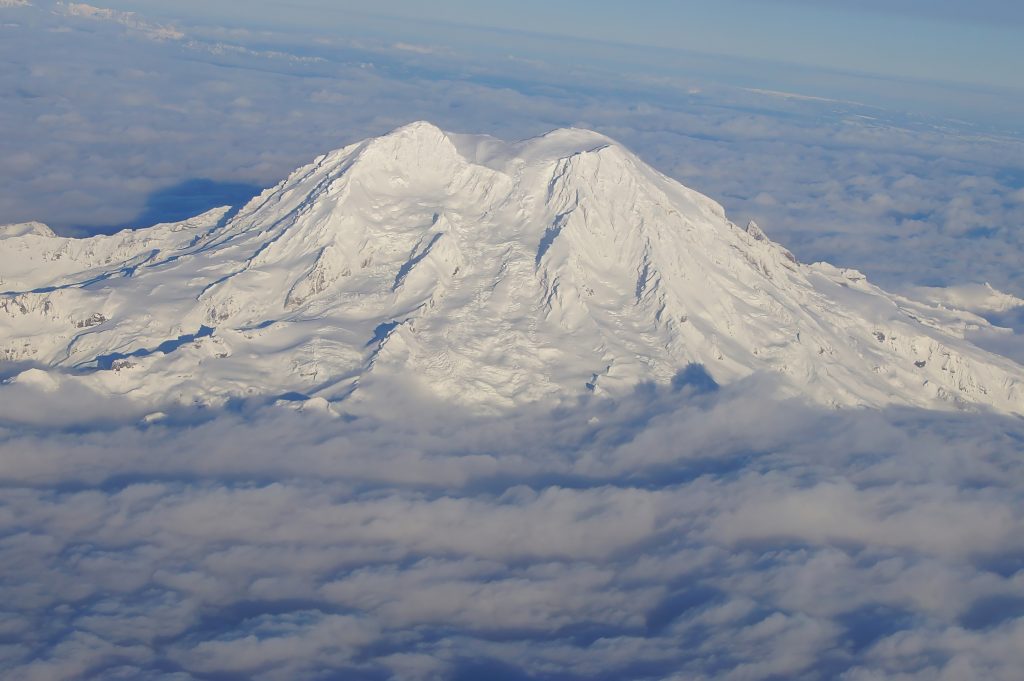
Climbing Mount Rainier is a popular but challenging endeavor. The mountain claims lives each year due to its unpredictable weather and difficult terrain. Spring is the most popular time to climb the easier routes, before major crevasses open. For more technical routes it also reduces the chances of snow or rockfall. Winter climbing freezes more rocks in place allowing climbs such as Gibraltar which are unsafe even in the spring.
Photography at Mount Rainier National Park
Image Galleries – Mt Rainier – Washington Cascades
The most classic shots feature Mount Rainier’s distinct, snow-capped peak, sometimes against a clear blue sky but usually with high cirrus or grasping lenticular. These images often capture the mountain from a distance, showcasing its grandeur.
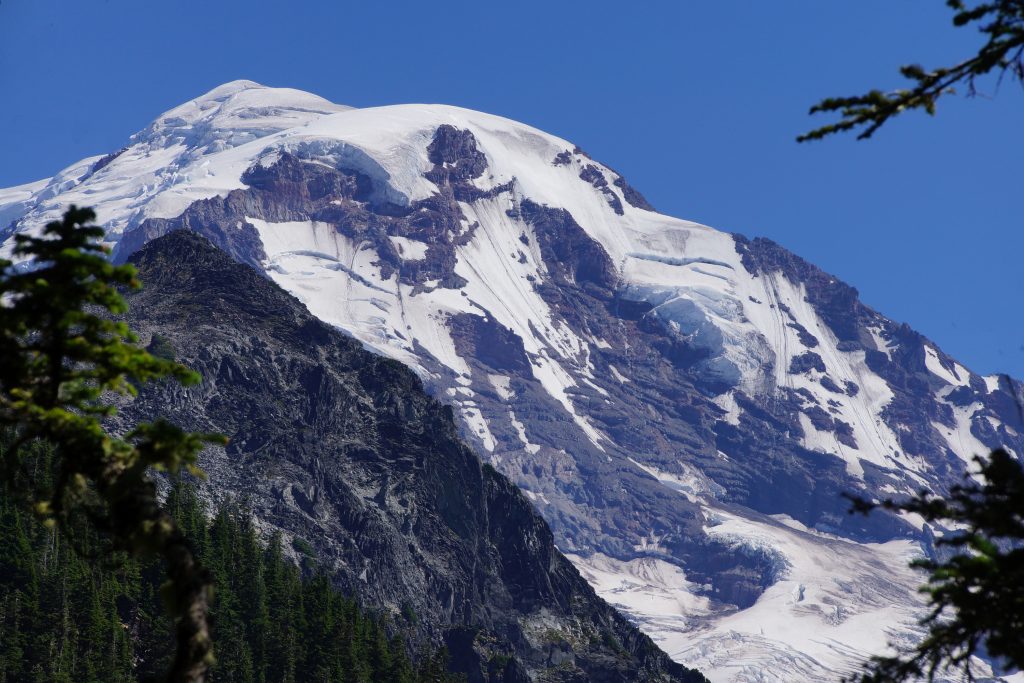
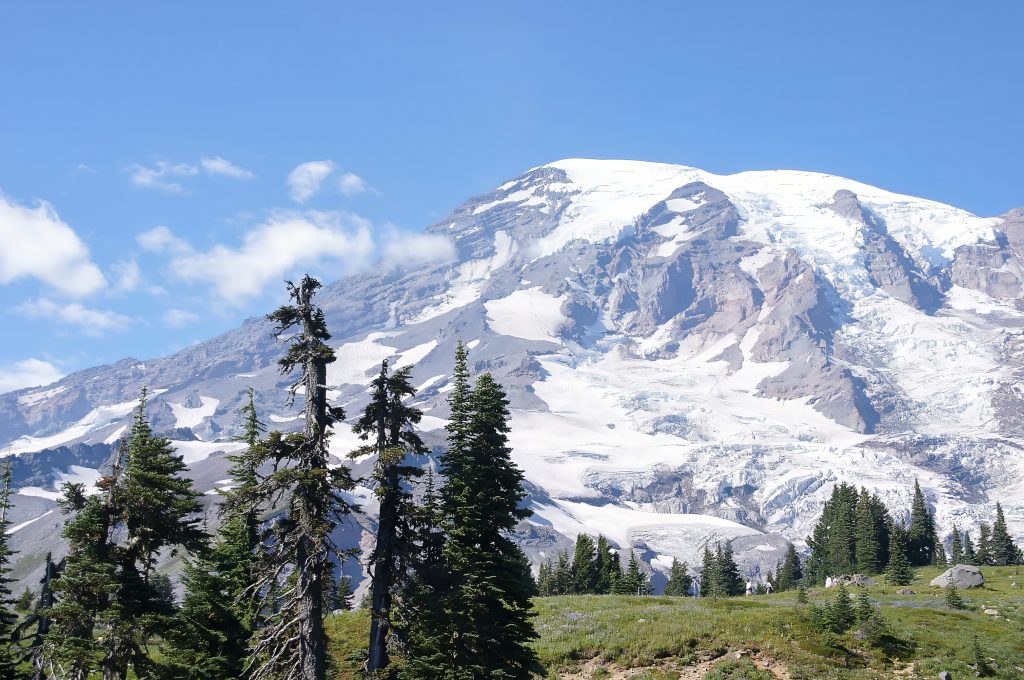
In the spring and summer, the lower slopes of Mount Rainier are covered in vibrant wildflowers. Photographers can capture the contrast between the colorful blooms and the snow-capped peak.
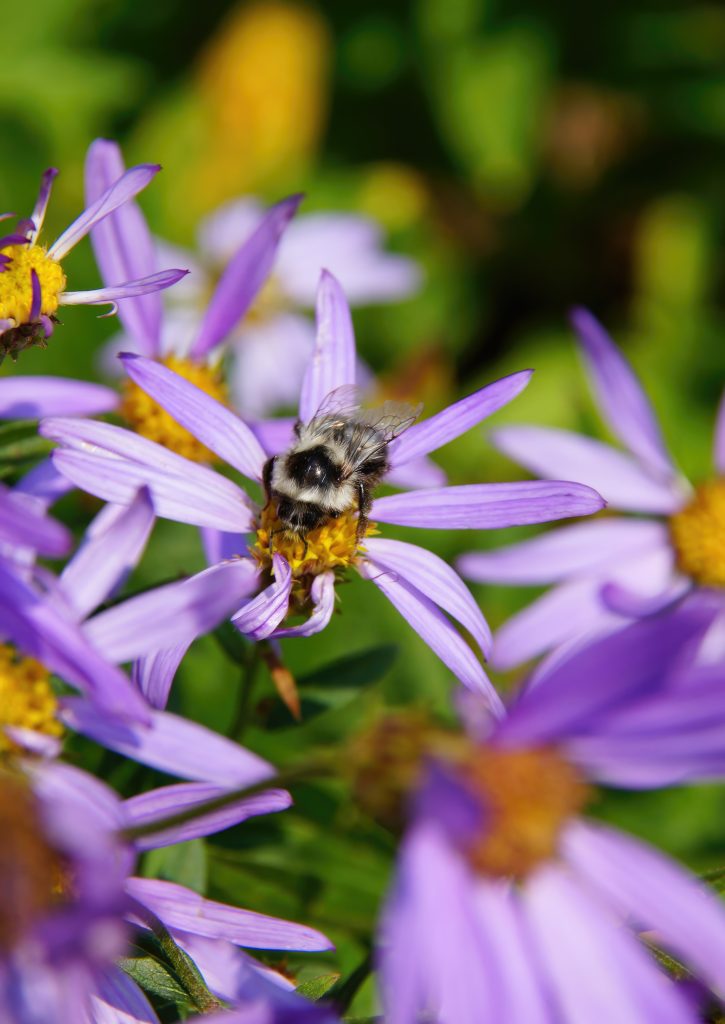
Reflection Lakes, reached by Stevens Canyon Road turnoff south of Paradise, offer mirror-like reflections of Mount Rainier, especially in the early morning or during calm conditions. This location is popular for capturing the mountain’s reflection in the water. In the winter the road is closed and when avalanche danger is low, skiers can reach it by following the 1.3 mile road.

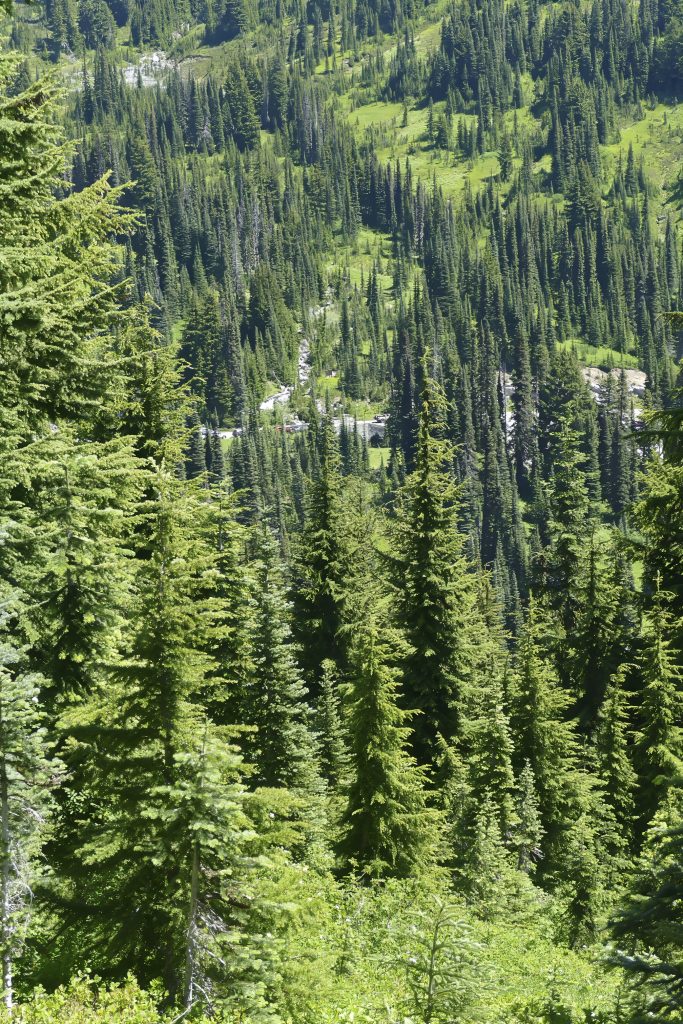
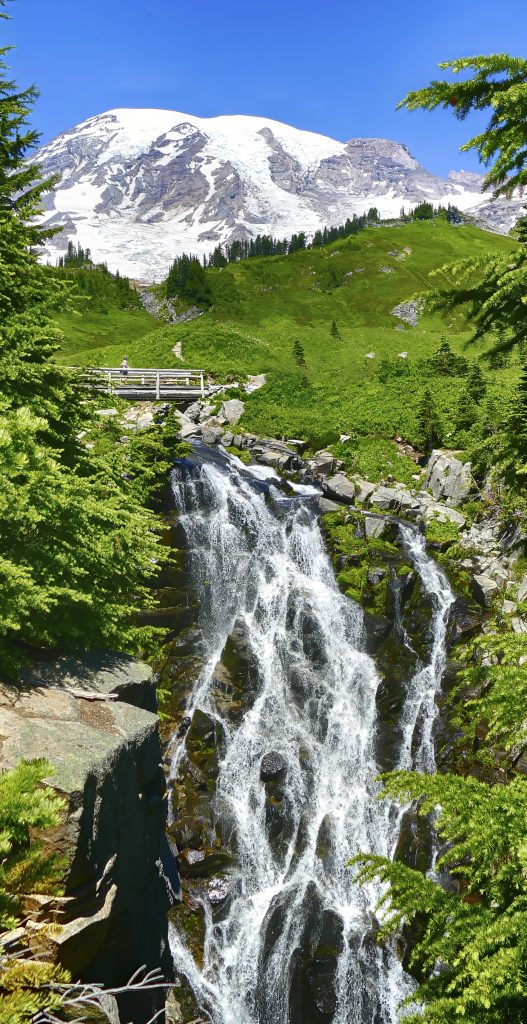
The changing light during sunrise and sunset creates dramatic and evocative shots. The mountain can take on a warm hue, contrasting beautifully with the surrounding landscape.

The park is home to various wildlife, including deer, elk, marmots, and even black bears.
The area around Mount Rainier is dotted with numerous waterfalls, such as Narada Falls and Christine Falls. These offer opportunities for long exposure shots, capturing the graceful flow of water against the rugged terrain. Since these waterfalls are along the main road to Paradise, parking can be difficult.
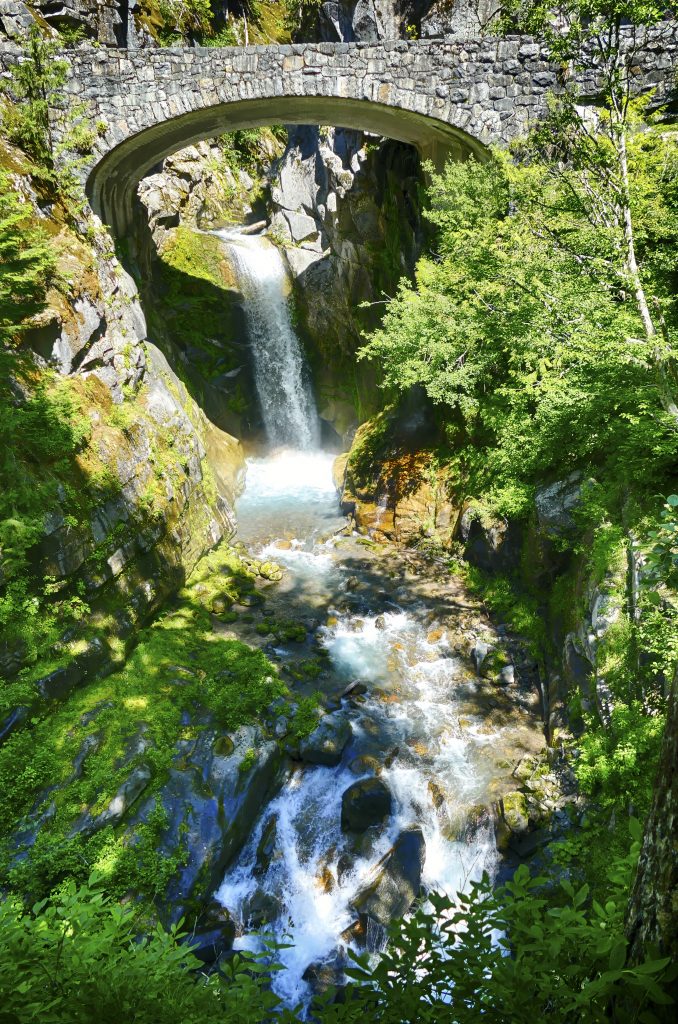
Mount Rainier is known for its glaciers, and capturing these features can provide a sense of the mountain’s geological history. Photographers might focus on crevasses, ice formations, and the dynamic nature of the glaciers. And combining climbing with photography yields even more possibilities.


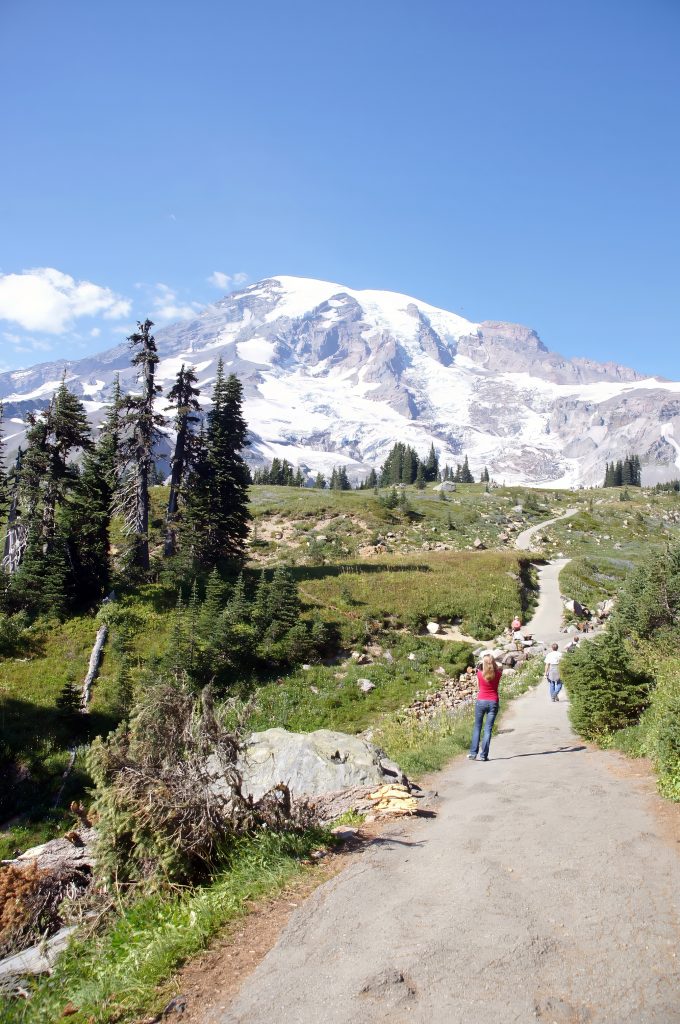
There are numerous hiking trails in the area, offering opportunities for capturing different perspectives of the mountain. Some trails lead to unique vantage points or provide interesting foreground elements.
Climbing Mount Rainier
is a challenging and exhilarating endeavor that draws thousands of climbers each year. Mount Rainier is a challenging climb, even for experienced mountaineers. It’s considered one of the most difficult non-technical climbs in the United States. While it doesn’t require advanced technical rock climbing skills, climbers face significant hazards due to the mountain’s high elevation, extreme weather conditions, crevasses, and avalanches. I’ve climbed Rainier 5 times by 3 different routes including one winter summit (plus several failed attempts due to weather changes during the ascent)

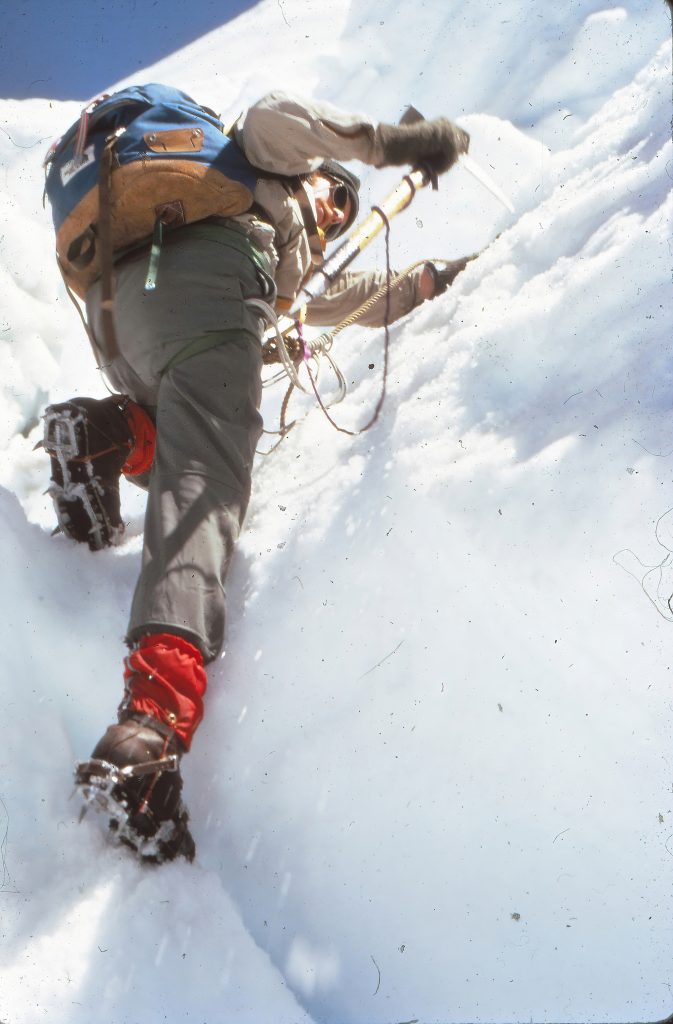

The summit of Mount Rainier sits at 14,410 feet. Climbers face the effects of high altitude, which can include symptoms like altitude sickness, fatigue, and shortness of breath. Acclimatization is crucial, yet one of the biggest difficulties for most climber who over 2 days move from sea level to 9000’ at base camp to 14,410’ at the summit.
There are several routes to the summit of Mount Rainier, each with its own challenges. The most popular routes include the Disappointment Cleaver Route, Emmons-Winthrop Route, and the Kautz Glacier Route. The more difficult climbs, involving ice-climbing on crevassed glaciers and rock-climbing on narrow crumbling ridges have longer approaches. These include Willis Wall and Liberty Ridge.
Many climbers choose to hire professional guide services. These experienced guides provide essential support, including route planning, equipment rental, safety training, and leading the climb. They also monitor weather conditions and make decisions regarding the safety of the climb. Experienced climbers choose the more challenging task of panning, route finding and assessing weather. And of course independent climbers need experience with the risks associated with crevasses, avalanches, and rockfall. Proper rope techniques, glacier travel skills, and self-arrest techniques are essential.
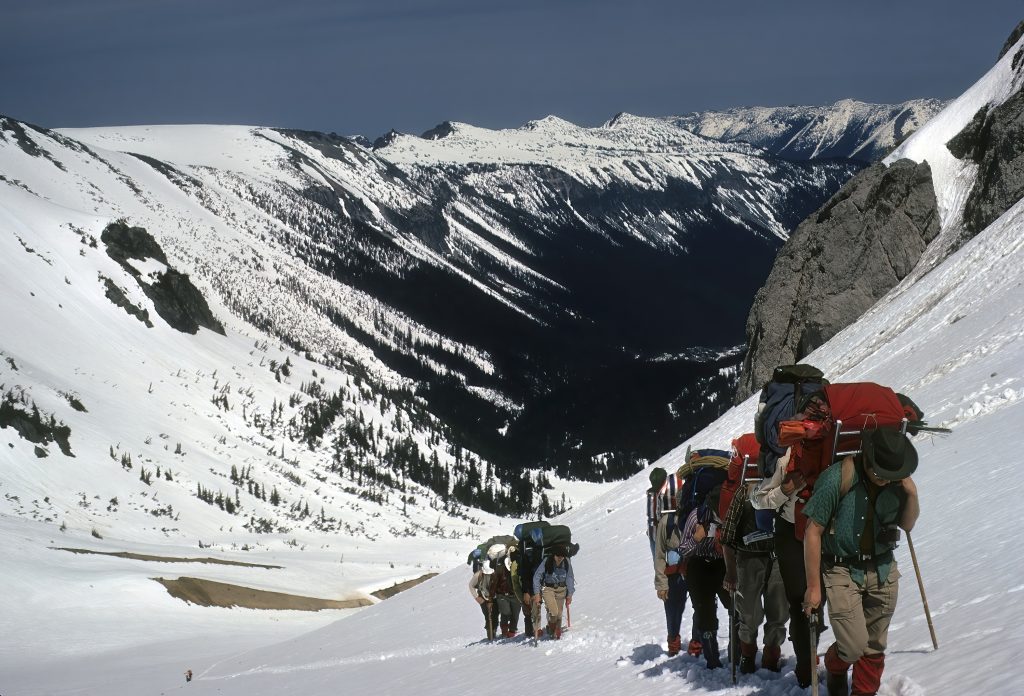
Necessary climbing equipment for a safe ascent of Mount includes crampons, ice axes, helmets, ropes, harnesses, and proper clothing for the extreme alpine environment. Layered clothing is essential. Weather conditions on Mount Rainier can change rapidly and are notoriously unpredictable. Storms, high winds, and whiteout conditions are common, even in the summer months. Climbers must be prepared for severe weather and be ready to turn back if conditions deteriorate. But conditions can change in a few hours from deep winter to full sun on highly reflective glaciers. Those choosing shorts on hot days often forget to protect the back of their knees with sunscreen, due to reflection from long trudges on snowfields and glaciers.
Climbing Mount Rainier requires a permit, and the park limits the number of climbers allowed on the mountain each day to manage impact and ensure safety. Permits can be obtained through a lottery system, or climbers can join a guided expedition, where permits are included.
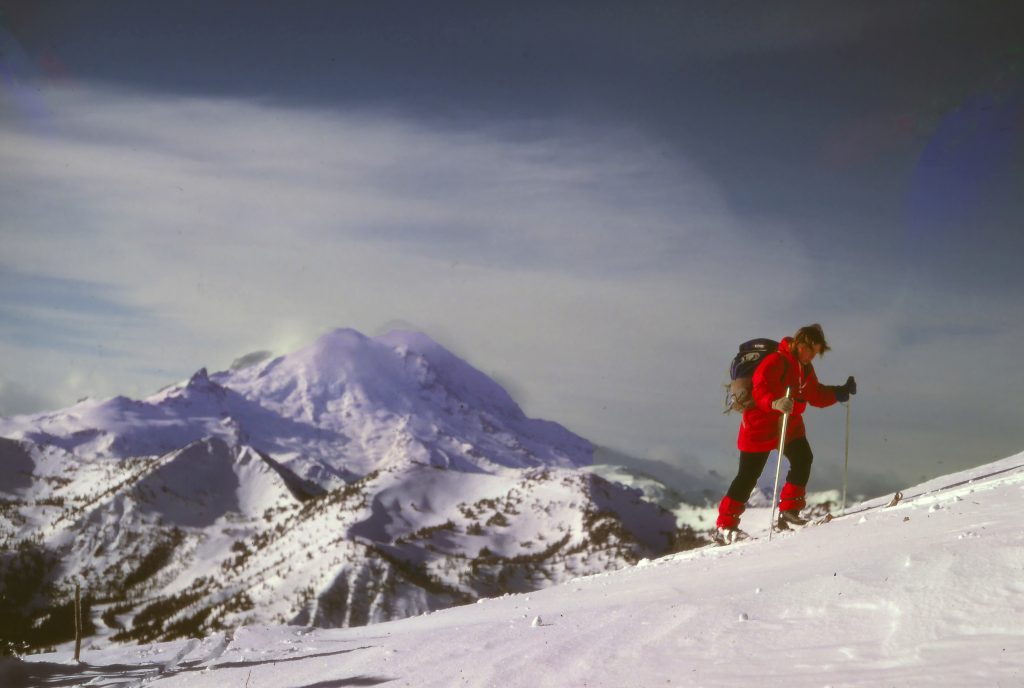
Mount Rainier National Park emphasizes Leave No Trace principles. Climbers are expected to pack out all waste, adhere to established routes, and minimize their impact on the mountain’s fragile environment.
Climbing Mount Rainier is a physically demanding and potentially dangerous activity that requires careful planning, training, and respect for the mountain’s challenges. However, for those who are properly prepared, reaching the summit can be an incredibly rewarding and awe-inspiring experience.
Download royalty-free images of Rainier
Order prints, greeting cards, clothing, and other merchandise
Our latest small group tours